#luminary sculptures
Photo
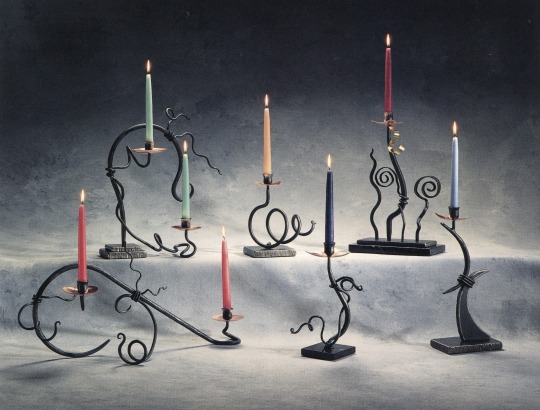
Luminary Sculptures by Eugene Wilson
Scanned From The Guild 9 (1994)
3K notes
·
View notes
Text
Please enjoy. 🏞️ I made this little house yesterday. I may populate it with small creatures… Perhaps, Marshmallow Babies?
#luminary#handmade miniature#handmade pottery#miniature house#organic sculpture#arizona artist#Spotify
4 notes
·
View notes
Photo

Vantage Point 08/15/2021
#eunbi#eunbilievable#eunbiericacho#ceramic#design#interior#architecture#landscape#sand#buildings#votive#luminary#candle#sculpture#art
2 notes
·
View notes
Text
Charles Alston: A Luminary of the Harlem Renaissance and Beyond
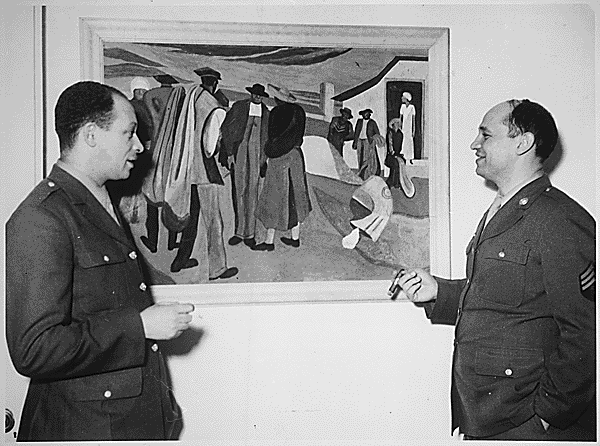
In the heart of the Harlem Renaissance of the 1920s and 1930s, Charles Alston emerged as a beacon of creativity and activism, blending the vibrancy of African American culture with profound social commentary. As a pioneering African American artist and educator, Alston’s legacy is celebrated for its dynamic impact on Black art and cultural expression during the 20th century. His work, which includes murals, illustrations, and sculptures, showcased his contributions to the Harlem Renaissance and his role in uplifting African American heroes through art.


Alston’s murals, commissioned by the Federal Art Project of the New Deal-era Works Progress Administration, adorned public spaces, bringing the narratives of the African American experience to a broader audience. His role during World War II, creating illustrations for the Office of War Information, further exemplified his commitment to using art as a tool for advocacy.


These illustrations, many of which are preserved in the National Archives, underscored the contributions of African Americans to the war effort, challenging the racial prejudices of the era. Alston also designed and painted murals at the Harlem Hospital and the Golden State Mutual Life Insurance Building. In 1990, Alston's bust of Martin Luther King Jr. became the first image of an African American displayed at the White House.
Beyond his artistic endeavors, Alston’s mentorship of future luminaries like Romare Bearden highlight his dedication to nurturing the next generation of artists. This mentorship underscored his belief in art’s power to foster community, inspire change, and bridge cultural divides in the United States. His influence extended to the civil rights movement, where his art continued to serve as a catalyst for social justice.

Charles Alston’s work remains a testament to his visionary blend of art and activism. For those interested in exploring Alston’s enduring impact and the rich tapestry of the Harlem Renaissance, the National Archives offers a treasure trove of resources:
Fully Digitized Artworks: https://catalog.archives.gov/search?availableOnline=true&page=2&q=Charles%20Alston&typeOfMaterials=Photographs%20and%20other%20Graphic%20Materials
https://catalog.archives.gov/search?availableOnline=true&page=2&q=Charles%20Alston&typeOfMaterials=Photographs%20and%20other%20Graphic%20Materials
84 notes
·
View notes
Text
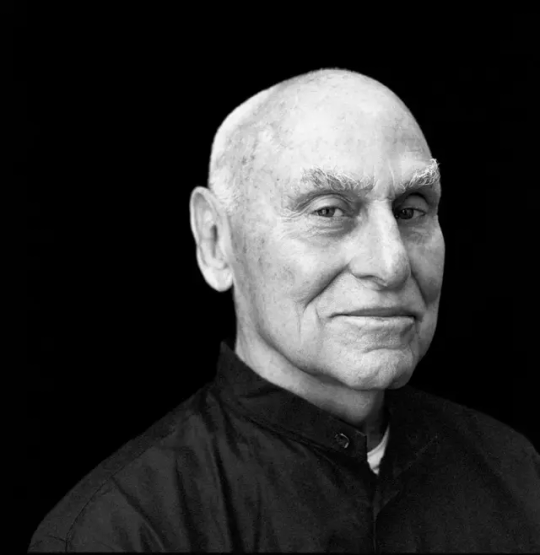
Richard Serra, who has died aged 85, was a remarkable cultural figure – a sculptor who belonged to the generation of American minimalists, was associated with process art and made experimental films, yet evoked something of an earlier, more heroic age. The critic Robert Hughes described him as “the last abstract expressionist”.
Although this statement stretches the point, Serra’s interest in the processes of sculpture led him to some extravagant gestural acts that belie the severity of his grand public commissions. Weight and Measure, made in the early 1990s for what is now Tate Britain, exemplified his austere side, with its massive steel forms designed to counter the building’s overbearing classicism. However, some of his other works, such as the twisting, “torqued” structures installed at the Guggenheim in Bilbao in 2005, are positively baroque.
Curled around an existing sculpture, Snake, that was commissioned for the museum’s opening in 1997, these steel works, dominated by ellipses and spirals, articulate spaces in which the gallery visitor can wander. They are monumental enough to take on Frank Gehry’s grandiose architecture, but, with their patinated surfaces and curved forms, also have an intimate, sensual quality. Above all, Serra’s sculptures create a remarkable interaction with the public and a strong experience of gradual discovery – hence the installation’s title, The Matter of Time.
His works have proved popular with curators, but are not confined to museums. They have appeared in settings as diverse as the Tuileries garden in Paris, the Federal Plaza in New York, and the Qatari desert, attracting responses from intense admiration to a public inquiry. One of his sculptures, Fulcrum, was put up in 1987 at Broadgate outside Liverpool Street station in London. It manages to combine monumentality with fragility, made of weathered steel plates that appear to support each other precariously.
He was born in San Francisco into a family that provided a foundation for his later career as a sculptor in metal. His father, Tony, who was from Majorca, was a pipe-fitter in a naval shipyard. His mother, Gladys (nee Fineberg), who was the daughter of Jewish immigrants from Odessa, used to introduce her son as “Richard, the artist” and was, later, touchingly enthusiastic when he began to make his way in New York. Serra himself laboured in steel mills during his time as a student and subsequently, in 1979, made a compelling film, Steelmill/Stahlwerk, about German workers in the industry.
Serra began his studies in 1957 at the University of California in Berkeley, graduating from the institution’s Santa Barbara campus with a degree in English literature. He followed this in 1961 with a three-year course in painting at Yale University, New Haven – a period in which he also worked as a teaching assistant and as a proof-reader for Joseph Albers’s book Interaction of Color (1963). At Yale he encountered such luminaries as Philip Guston, Robert Rauschenberg, Ad Reinhardt and Frank Stella, before winning a fellowship that took him to Europe in 1964.
In Paris, Serra was profoundly impressed by the sculpture of Constantin Brâncuși, but in Florence the following year he continued to paint, producing coloured grids in timed conditions controlled by a stopwatch. It was only with his first exhibition, at the Galleria La Salita in Rome in 1966, that he made a definitive move away from painting, filling cages with live and stuffed animals.
After moving to New York in the same year, Serra initially survived by setting himself up as a furniture remover, together with his friends, the composers Philip Glass and Steve Reich. Serra’s artistic development at this time was rapid, moving from experiments with rubber, fibreglass and neon tubing to the metal sculpture for which he became renowned. He soon began his long-term association with the Leo Castelli Gallery in New York, in whose Warehouse annex he was photographed in 1969 throwing molten lead at the wall with a ladle.
In the same year Serra refined this procedure by splashing the metal against a small steel plate stuck into the corner of Jasper Johns’s studio. The “castings” produced when the lead cooled down were rough, expressive forms, but this project also inspired Serra to create more impersonal pieces, in which metal sheets were wedged into the angles of rooms, leaned against each other or pinned to the wall by lead pipes. His emphasis on objective phenomena – mass, gravity and other physical forces – can also be seen in his remarkable experimental films.
In Hand Catching Lead (1968), the hand is in fact the artist’s but it is shown disembodied, trying to grasp rather than cast pieces of falling lead, which it drops or misses altogether. The repetition of this fundamentally pointless act gives the film a serial quality, akin to the celluloid process itself.
Serra’s engagement with the cutting edge also led him to work with the land artists Robert Smithson and Nancy Holt. In 1970 he assisted them with Spiral Jetty at the Great Salt Lake in Utah and, after Smithson’s death in 1973, Serra helped to complete Amarillo Ramp in an artificial lake in Texas. His own site-specific sculptures included Spin Out: For Bob Smithson (1972-73), in the park-like surroundings of the Kröller-Müller Museum at Otterlo in the Netherlands. Here the three converging steel plates interacted with each other and their environment, exemplifying Serra’s aim that “the entire space becomes a manifestation of sculpture”.
The 1970s was a difficult decade in Serra’s life. In 1971 a worker was killed in an accident during the installation of one of Serra’s sculptures outside the Walker Art Center in Minneapolis. His five-year marriage to the artist Nancy Graves ended in 1970, and his mother’s suicide in 1977 was followed two years later by the death of his father. However, in that decade he also met his future wife, the art historian Clara Weyergraf, with whom he collaborated on Steelmill/Stahlwerk. Clara was also to play a vital role in shaping his sculpture, as well as giving her name to Clara-Clara, a powerful, curvilinear work that was installed in the Tuileries garden in 1983. The history of this piece exemplifies Serra’s problems in making site-specific art, since it was originally intended to feature in a show at the Pompidou Centre, but at a late stage was deemed to be too heavy.
Clara-Clara’s travails were minor in comparison to the controversies surrounding Tilted Arc, a sculpture 36 metres long, set up at the Federal Plaza in Manhattan in 1981. Condemned for being intrusive, a magnet for graffiti artists and even a security risk, it was eventually removed in 1989, four years after a public hearing in which a majority of witnesses had advocated its preservation.
Despite this setback, Serra’s career continued to flourish. He had two retrospectives, in 1986 and 2007, at the Museum of Modern Art in New York, which also devoted a permanent room to his monumental work Equal (2015), as well as major exhibitions at home and abroad. He showed frequently with his gallery, Gagosian, in London, New York and Paris, most recently in 2021.
In 2001 he received a Golden Lion for lifetime achievement at the Venice Biennale, in 2015 the Légion d’honneur in France and, three years later, the J Paul Getty Medal.
During his latter years, Serra became heavily involved with public projects in Qatar, above all the four steel plates, rising to over 14 metres and spanning more than a kilometre, erected west of Doha in 2014. Known as East-West/West-East, the work engages spectacularly with its surroundings, the gypsum plateaux of the Brouq nature reserve in the Dukhan desert. Serra himself described it as “the most fulfilling thing I’ve ever done”.
He is survived by Clara.
🔔 Richard Serra, artist, born 2 November 1938; died 26 March 2024
Daily inspiration. Discover more photos at Just for Books…?
13 notes
·
View notes
Text

In the vibrant and transformative era of the 1950s and 60s, the world beheld the rise of a truly remarkable artist, Jacques Lipchitz. This eminent sculptor, widely regarded as the most celebrated Jewish sculptor of his time, breathed life into stone and metal, crafting masterpieces that transcended the boundaries of artistic expression.
Mr. Lipchitz was born as Chaim Yaakov Lipchitz in Poland in 1891 to Orthodox Jewish parents. Even as a little boy, Jacques was drawn to sculpting. His father was a contractor for hire, and the boy learned from his father’s craftsmen how to sculpt various objects. With unwavering determination, he began to mold clay and carve stone, meticulously honing his craft. However, his father viewed his artistic pursuits as frivolous and impractical, dismissing them as a waste of time. But Jacques' mother, recognizing his exceptional talent, became his steadfast champion. She encouraged him to pursue his passion and fervently supported his creative endeavors.
In 1909, at the tender age of 18, Jacques embarked on a transformative journey that would shape the course of his artistic destiny. He set foot in the bohemian capital of the art world, Paris. The city's vibrant atmosphere and thriving artistic scene provided the fertile ground for Jacques to blossom. There, amid the enchanting streets and captivating galleries, he swiftly gained recognition for his extraordinary talent and visionary approach to sculpture. Jacques Lipchitz soon etched his name among the esteemed ranks of the art world, forging lifelong friendships with luminaries such as Pablo Picasso and Marc Chagall.
Paris, however, became a double-edged sword for Jacques in terms of his Jewish identity. While he reveled in his artistic pursuits and reveled in the company of esteemed artists, he found himself gradually distancing from the observance of Torah and mitzvot. Despite this divergence, Jacques never abandoned his Jewish roots. He remained fiercely proud of his heritage, steadfastly declaring his Jewish identity at every turn.
It was in Paris that Jacques Lipchitz met a Jewish woman who would become his wife. They embarked on a union that lasted over two decades, their lives intertwined amidst the rich cultural tapestry of France.
However, the outbreak of World War II cast a dark shadow over their lives, forcing them to flee their cherished home, their beloved studio, and their cherished artistic projects that lay incomplete.
The Lipchitzes sought refuge in the United States, hoping to find solace and safety amidst the tumult of war. They arrived on American shores, dispossessed and bereft, having left behind the remnants of their life in Europe. The ravages of war had severed the threads connecting Jacques to his artistic endeavors, leaving him with a profound sense of loss.
After the war subsided, Jacques received an invitation to return to Paris for an exhibition of his renowned sculptures. Brimming with hope and longing for a return to familiarity, he embarked on the journey with his wife by his side. However, fate had a different plan in store. While in Paris, his wife expressed her discontent with life in America and resolved to stay in France. In a heart-wrenching decision, Jacques chose to return to the United States alone, leaving behind the life he had built, and in due course, his marriage dissolved. Yet, amidst the upheaval and personal turmoil, a newfound chapter awaited him.
Back in New York, Jacques Lipchitz crossed paths with another Jewish woman, hailing from a Chasidic Jewish background and deeply rooted in tradition. Their shared heritage and mutual understanding forged a deep connection, leading them to marriage. Together, they embarked on a new journey, finding solace and companionship in each other's embrace.
The year 1958 dawned like any other, but for Jacques Lipchitz, it quickly descended into a nightmare. A foreboding unease settled within him as he awoke one fateful morning, feeling unwell. As he attempted to take a few steps, his strength betrayed him, and he collapsed onto the ground. Panic set in, and he was rushed to the hospital, where a harrowing truth awaited him. The doctors informed his wife that Jacques had been diagnosed with intestinal cancer, and they had performed emergency surgery. A long and arduous road to recovery lay before him.
Mr. Lipchitz trembled with trepidation upon receiving this devastating news, while his wife, plagued by worry, sought solace in the counsel of her brother. He advised her to visit the Lubavitcher Rebbe, a revered spiritual leader, and seek his blessing for her husband's recovery. Embracing this glimmer of hope, Mrs. Lipchitz made her way to see the Rebbe, carrying with her the weight of her husband's fragile existence.
As she stood before the Rebbe, pouring out her fears, he greeted her with a serene knowingness. The Rebbe reassured her, uttering words of profound comfort, "I know about you, and I know your husband. Go home! You have nothing to worry about. He will live!" In addition to this resolute assurance, the Rebbe issued a request. He beseeched Mrs. Lipchitz to convey to her husband that once he recovered, he should come and visit the Rebbe personally.
Overwhelmed by this extraordinary encounter, Mrs. Lipchitz returned to her husband, clutching the Rebbe's words like a lifeline. She relayed the Rebbe's message of hope and shared his invitation. Jacques Lipchitz, stirred by the Rebbe's conviction and touched by his unwavering faith, immediately vowed that if his life was spared, he would wholeheartedly accept the Rebbe's invitation. And so, with time, Jacques' health improved, and he was discharged from the hospital, stepping into a world renewed.
In the summer that followed, Jacques Lipchitz embarked on a sacred pilgrimage to meet the Rebbe, seeking solace, guidance, and spiritual awakening. During their private audience, Jacques poured out his life's narrative, recounting the myriad of triumphs, trials, and artistic creations that had shaped his journey. He spoke of his sculptures, which graced churches worldwide, and even shared that he had been working on a statue of the "virgin" for a Catholic church. The Rebbe, a patient and attentive listener, offered no commentary on Jacques' artistic career. Instead, he posed two requests, imbued with profound significance. Firstly, he implored Jacques to resume the daily practice of putting on tefillin, a tangible connection to his Jewish roots. Secondly, the Rebbe urged Jacques to rectify his previous marriages according to Jewish law, ensuring the sanctity and validity of his unions, to give his ex-wife a proper halachic get and to marry his current wife with a proper chupah.
Jacques Lipchitz embraced the Rebbe's guidance wholeheartedly, responding to both requests with utmost dedication. Despite not having put on tefillin since the age of 18, Lipchitz resumed this practice at the age of 67, complying with the Rebbe's suggestion. Their bond grew over the years, and Lipchitz actively engaged in farbrengens (Chassidic gatherings) and maintained frequent correspondence with the Rebbe.
During one of their exchanges, Lipchitz expressed his willingness to assist the Rebbe in any way possible. In response, the Rebbe advised him to support Chabad shluchim (emissaries) whenever he traveled to a location where they were present. The Rebbe explained that Lipchitz's status as a renowned artist might be unknown to the the Chabad rabbis, and suggested that Lipchitz inform them to inquire about his identity with one of their supporters, thus providing an opportunity for them to become familiar with his prominence.
When Lipchitz arrived in California, he contacted Rabbi Cunin, the local Chabad shliach, as instructed. Their conversation ensued in a playful manner, with Lipchitz introducing himself “Hello, this is Jacques Lipchitz. Do you know who I am?” “This is Shloimeh Cunin. Do you know who I am?” Lipchitz chuckled, explaining the Rebbe's directive and clarifying his significance. Rabbi Cunin promptly organized an event centered around Lipchitz, recognizing the importance of hosting such a distinguished guest.
Wherever Lipchitz went, he made it known that he regularly put on tefillin. He believed this practice connected him to his heritage and to a spiritual realm, providing him with the inspiration necessary for his sculpting work.
During that time the Rebbe sent him a letter addressing the issue of sculpting in Judaism. The Rebbe wrote as follows: “The subject at hand was a craft associated with the fundamental prohibition of idol worship.” On the other hand, the Rebbe continued, if it is performed in a way that is compatible with the Torah, it can strongly influence the world of emotions within the viewer. There is a known concept in the Torah that the end does not justify the means. And since the purpose of the art of sculpting is to inspire the viewer to the loftiest feelings, this can be only be achieved when one’s philosophy is compatible with the Torah.
In fact, Jewish law (Yoreh Deah 141:7) states that “Some say that a human form is only prohibited… specifically with a full form with all its limbs; but the form of a head, or the form of a body without a head, involves no prohibition whatsoever”—to which the famous Halachic authority Rabbi Moshe Isserlis adds, “And thus is the custom.” In fact, the Halacha is that as long as the sculpture is missing one limb, it’s permitted.
In 1973, Jacques Lipchitz passed away unexpectedly. Following his demise, his wife approached the Rebbe and shared that her late husband had been commissioned by the women of the Hadassah organization to complete her late husband's sculpture of the phoenix bird. The statue was intended for donation to the Hadassah Hospital in Jerusalem, but concerns were raised about the phoenix not being a Jewish symbol. Seeking the Rebbe's guidance, Lipchitz's wife inquired how such a sculpture could be presented in Jerusalem.
In response, the Rebbe summoned Rabbi Krinsky and requested the Book of Job. Quoting from Chapter 29, Verse 18, the Rebbe highlighted Rashi's commentary on the phoenix as a bird named "chol" that was not subject to death due to not tasting the Tree of Knowledge. The Midrash further explained the phoenix's unique cycle of death and rebirth after 1,000 years. The Rebbe concluded that the phoenix symbol had clear Jewish connotations. Mrs. Lipchitz was delighted to hear this and successfully completed the project.
In one of the Rebbe’s letters to Jacques Lipchitz, the Rebbe drew parallels between the work of a sculptor and the spiritual journey of every human, emphasizing that the sculptor, even more so than a painter, transforms raw material into a spiritual concept. Similarly, humans possess the ability to infuse spirituality into the physical world through the performance of mitzvot. By engaging in physical mitzvot, such as writing the Shema on a piece of leather to create a mezuzah, individuals imbue these objects with holiness.
The Rebbe conveyed the idea that every individual is essentially an artisan, tasked with sculpting their portion of the physical world into something spiritual and holy. By performing mitzvot, individuals bring forth the inherent spirituality within the material realm, elevating it closer to holiness.
May the memory of Jacques Lipchitz be for a blessing.
Rabbi Yisroel Bernath
28 notes
·
View notes
Text
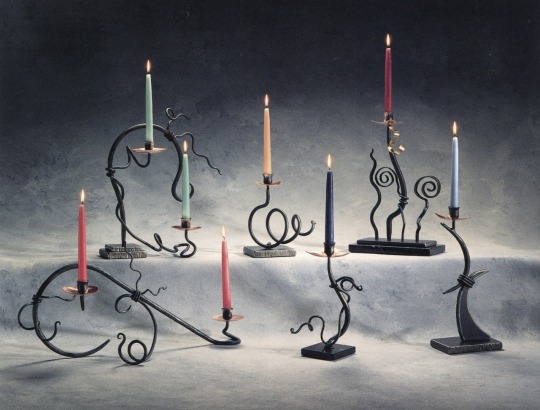
Luminary Sculptures by Eugene Wilson
Scanned From The Guild 9 (1994)
8 notes
·
View notes
Text
Artist Spotlight: Leslie Williamson

Leslie Williamson is a photographer of interiors. We mean this literally – in books like Still Lives and Modern Originals she photographed the studios and homes of iconic artists, including some of our Northern California favorites – but also figuratively, because what is remarkable about Williamson is her ability to touch upon the life of a space, or as she calls it, the soul – the part that offers a glimpse of a person's inner world, even when that person is no longer part of this one. In speaking with her, and looking at the mysterious, quiet, strangely emotional places she has photographed, I kept thinking of Gaston Bachelard's maxim in The Poetics of Space: "all really inhabited space bears the essence of the notion of home." Flip through any one of her books, and you will see how such notions take shape.
Studio AHEAD: Let's start with your essay "Doc's Lab," published a few weeks ago in a recent WildSam guide, Big Sur & HW 1. Tell us about it and what draws you to this particular landmark in Monterey.
Leslie Williamson: It’s funny how that came about. I became a little enthralled with Ed Ricketts and his Pacific Biological Laboratories when I moved to Monterey in April 2020 (yes, a pandemic move…). I am sure it won’t surprise you to learn that when I am in a new place, I research “house museum” to find what is around me, and when I did this in Monterey, Pacific Biological Laboratories came up. I have never read any Steinbeck so I wasn’t familiar with Ricketts and his story, but with the quiet of the pandemic I soon became a fan. Ricketts is such an inspiring character! It’s no wonder he was Steinbeck’s best friend and muse.
Anyhow, I tried and tried to visit Pacific Biological Laboratories throughout the pandemic but it was always closed. Finally one day, as I was on a walk, the door was open and the nice docent let me in even though I didn’t have a reservation. Oh my goodness that space, it gave me goosebumps!!! It is just so special – steeped in history on a few different levels: early 20th-century Cannery Row and the PBL/Doc Ricketts era and through to the birthplace of the Monterey Jazz Festival and the men’s club that left it to the city of Monterey.
Of course I photographed the space and my plan was to write an essay to accompany it that would go on the Still Lives Portal on my website. I have begun sharing my stories in real time there. Happily the WildSam project seamlessly dovetailed in unexpectedly. I am thrilled they wanted to publish my essay in their 50th WildSam guide. I hope people will read the essay while looking at the images. It will really bring it to life.
SA: While we're talking about places, I want to mention a photograph you took that I find so compelling: of JB Blunk's Moongate sculpture that leads to JB Blunk's house. We've been to the estate, and to get there you have to go deep into the woods of Inverness, along a windy road up a steep mountain far from everything, and there is a sense of the space caught unawares, as if no one is supposed to see it. I'm not really sure this is a question! But maybe you can speak about this feeling; it's very powerful.
LW: Thank you! It is a special place for sure. I experienced that same feeling on my first visit. Somehow my emotions come through in my images a lot of the time. I’m not sure I can say more than that. It has always been that way.
SA: I love the home libraries of various Californian luminaries that you shot in Interior Portraits – partly because whenever I'm in someone's house for the first time I head straight to their bookshelf, and partly because they're incredible spaces. Ray Kappe's library, with its bright blue cushions and the bamboo forest outside, shows his relation to reading. What sort of objects "speak" to you as the kind that tell a story, and how do you photograph that object in way that helps it best tell its story?
LW: First off, can I just say I love libraries too…so much. There was a time when our bookshelves were a window to our mind, heart and soul. I just added a Bibliophilia section on my SL Portal that shares people's bookshelves. I always photograph them and they never make them into my books so I decided they needed a venue of their own.
As for other objects that speak to me, I never know what they are going to be. It is different for every person/space I am in. I generally just trust my gut. From Una Jeffer’s narwhal tusk, to Georgia O’Keeffe’s record collection, I seem to be able to sense where there are meaningful stories.
SA: What role does writing play in your photography, and vice versa?
LW: My writing is still a surprise to me. I see it as in service to my photography; but having said that, the "Doc’s Lab" story ran in WildSam with none of my photographs, so maybe that is evolving? When I wrote Handcrafted Modern, it was a bit of an unexpected turn of events that led me to writing the book, as well. But in hindsight, it was the magic combination of expression I didn’t know I was looking for. The photography always comes first and I let my curiosity run rampant as I shoot. Then, after I have edited the images, I hone in on the stories I want to share in the writing. That is the general scenario my process takes.
SA: Speaking of which, you've now published four books. Tell us a little bit about this process – whether you've a vague idea for each project... or how you build a narrative between each space photographed ... maybe a hint as to the next project you're working on…..
LW: The process of creating my books has evolved quite a bit since Handcrafted Modern. I began just because I wanted to see the spaces of my favorite architects and designers and this evolved into a plan to create a library of how creative people live in the 20th/21st centuries. And that is still happening, but I realized pretty quickly that the discernment of my choice of spaces to photograph is very specific. I am looking for what I call “soul spaces”: spaces that are still imbued with their inhabitant’s soul if they are no longer with us and an innate expression of the owner if they are still living there. There is always a certain je ne sais quoi that I am looking for. I know it when I see/feel it. But I am not sure there are words to describe it.
As for what’s next, I am looking to more shows in art galleries and museums. There is a particular project I am just diving into that will be in a major museum in a few years. I can’t say more. And of course there will be an accompanying book. Creating books is in my DNA.
SA: Finally, pretend you are not Leslie Williamson and that Leslie Williamson comes to one of the homes you've lived in – any of them from your whole life – to photograph it for Still Lives: The Sequel. What room would you want her to capture? What is in it?
LW: Oh wow…what a question! I am not sure any of my former or current homes would warrant being included in one of my books. But I do wish I could time travel back and photograph all of my former living spaces starting with my childhood home, where my father still lives, before we remodeled it in 1976. I can’t really remember it before that and am curious what it was like in its original state and how my parents had it set up, what objects they had, etc. I also wonder if there is an evolutionary through line of my own that would be evident in my own bedroom/homes throughout my life starting from my first bedroom. Like artists who make a portrait of themselves once a year, I wish I had a portrait of my living spaces for every year. I would be fascinated to see that, just for my own curiosity and self learning.
Photos by Leslie Williamson


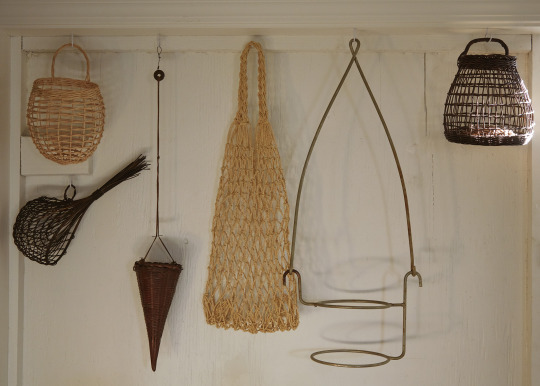
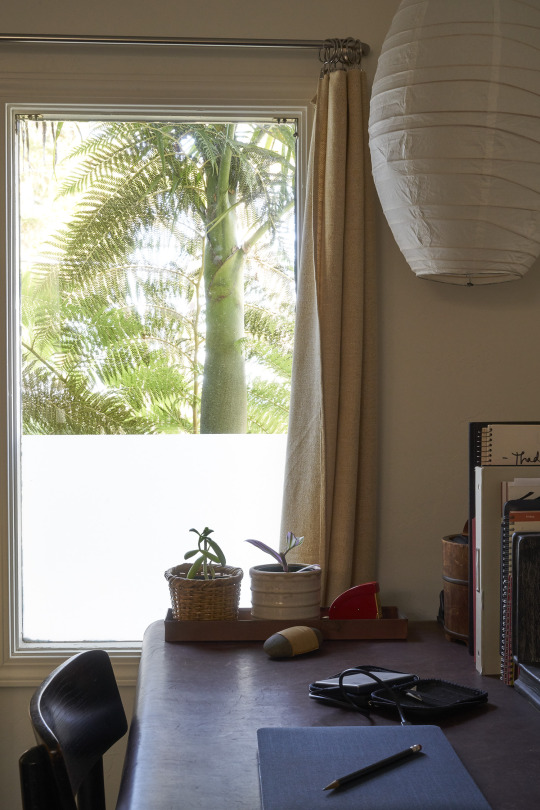
Leslie Williamson’s home in Monterrey, CA.

“The Party Room” at Doc’s Lab on Cannery Row in Monterey. Originally the home of noted marine biologist and Steinbeck muse Ed Ricketts.

Detail in Ed Rickett's former home and business, Pacific Biological Laboratories, on Cannery Row. Monterey, CA.
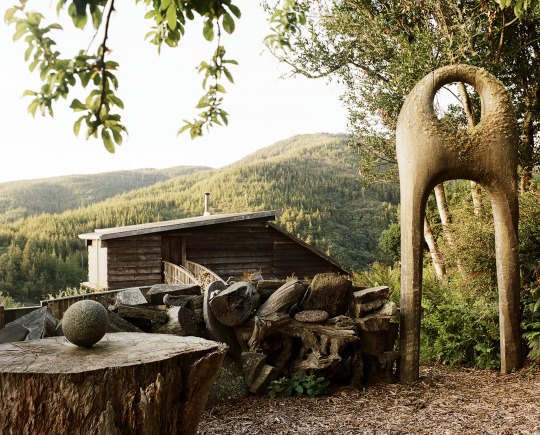
JB Blunk’s ‘Moongate’ sculpture and his home in Inverness, CA.

Detail of the living and loft area in JB Blunk’s home.

Artist and AIDS activist Derek Jarman’s library at Prospect Cottage, his home in Dungeness, UK.


The kitchen/greenhouse and a longe area in the home of artists Evan Shively and Madeleine Fitzpatrick. Marshall, CA.
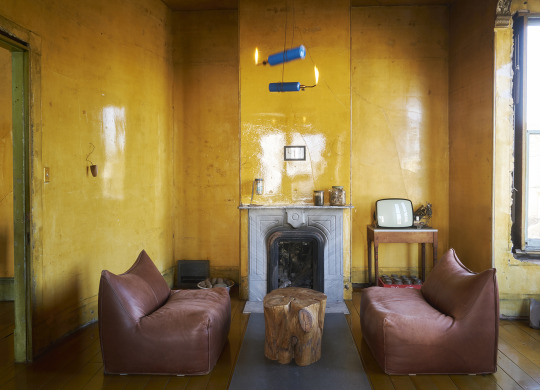
Artist David Ireland’s sitting room in his home and masterwork, 500 Capp Street. San Francisco, CA.

Stair detail in artist Jesse Schlesinger’s home. Sausalito, CA.
#leslie williamson#jesse schlesinger#david ireland#madeleine fitzpatrick#evan shively#derek jarman#jb blunk#ed rickett#Studio Ahead
7 notes
·
View notes
Text
Madrid set to host the inaugural Formula 1 Exhibition
Madrid set to host the inaugural Formula 1 Exhibition
By Balazs Szabo on 15 Nov 2022, 16:43
Formula One has announced that the very first official Formula 1 Exhibition will be held in Madrid beginning on March 24, 2023 and running all the way through July 16.
The very first F1 Exhibition will be hosted at the renowned IFEMA MADRID and will run until Sunday 16 July 2023, with the aim of providing a stunning adventure through the extraordinary world of Formula 1. Visitors will be able to witness a wide range of never-before-seen artefacts and contributions from the sport’s most legendary teams, experts and personalities.
The special exhibition will come to life in partnership with Round Room Live, with the venue featuring six purpose-built rooms, each specially designed in collaboration with award-winning artists, filmmakers and craftspeople. Formula One promises that "the show uses bold, technology-led design features and large-scale interactive displays to lift the lid on Formula 1’s past, present and future."
"Several years in the making, the stunning 90-minute experience neatly combines spectacular audio-visual design, rare film and imagery, engineering and educational displays, sculptural pieces and iconic Grand PrixTM cars to deliver an immersive experience for everyone - from avid followers to younger fans and families," said F1's official statement.
Tickets will go on general sale in December.
Stefano Domenicali, President and CEO of Formula 1, said: “The opening of this spectacular exhibition marks a significant moment in the history of Formula 1. As the sport continues to grow at an exponential rate, it’s vital that our fanbase remains at the forefront of everything we do.
“Launching this world-class international exhibition allows more fans around the world to fall in love with F1, while providing the perfect platform for us to honour the sport’s incredible history. I want to thank everyone who has contributed to this project and helped to build an exhibition that captures the heart and soul of the sport we all love.”
Timothy Harvey, the exhibition's Lead Curator and Producer, added: “To curate and produce the world’s first official Formula 1 Exhibition has been a huge honour. This show takes fans behind the curtain of Formula 1, providing a new range of fascinating perspectives and unexpected stories about the sport.
“We have been overwhelmed by the support of so many of the F1 teams and luminaries. I believe the show celebrates Formula 1’s rich history and heritage in a dramatic and fun way that will engage everyone from avid fans to young kids and families. It’s been many years in the making and now I can’t wait to open the doors in Madrid!”
via F1Technical.net . Motorsport news https://www.f1technical.net/news/
3 notes
·
View notes
Text
LA / Carlie Trosclair: a semblance of b r e a t h . . .

Carlie Trosclair: a semblance of b r e a t h . . .
November 19 - December 11, 2022
a semblance of b r e a t h . . .
a liminal space,
of longing between~
a living archive.
vignettes of time.
Tiger Strikes Asteroid LA is proud to present a semblance of b r e a t h . . . a solo exhibition by Carlie Trosclair. Approached through a lens of reordering and discovery, Trosclair’s work contemplates the living and transitional components of home. Architectural bodies carry with them the layered histories of previous residents. These become the shells we leave behind; Relics of habitation and home-making.
From structural cracks in a building, the palimpsest of paint, or footprint of rust these surfaces are connected by the ways they mark time. Echoes of the familiar are absorbed into the membrane of each latex body, crystallizing textures and detritus of place. Combining structure and fluidity with cycles of expansion and contraction, the narrative of home shape shifts from a secure space into one that is permeable and ephemeral: both structurally and in our memory.
Carlie Trosclair’s sculptural installations create new topographies and narratives that highlight structural and decorative shifts evolving over a building’s lifespan. Growing up in New Orleans as the daughter of an electrician, Trosclair spent her formative years in historic residential properties at varying stages of construction and deconstruction. She found that even when abandoned, the presence of the body still lingered. Reflexively her work reimagines the genealogy of home using latex as an architectural skin. Thin ghostlike imprints mark an in-between space that is transient and ever changing: both structurally and in our memory. Trosclair’s select artist residencies include: Bemis Center for Contemporary Arts (NE), Joan Mitchell Center (LA). Loghaven Residency (TN), Tides Institute & Museum of Art (ME), chashama (NY), Vermont Studio Center (VT), and The Luminary Center for the Arts (MO). Trosclair’s work has been featured in Art in America, The New York Times, ArtFile Magazine, and Temporary Art Review, among others. She is the recipient of the Riverfront Time‘s Mastermind Award, the Creative Stimulus Award, Regional Arts Commission Artist Fellowship and the Great Rivers Biennial Award. Trosclair earned an M.F.A from the Sam Fox School of Design & Visual Arts at Washington University in St. Louis, a B.F.A from Loyola University New Orleans, and is an alumni of the Community Arts Training Institute in St. Louis.







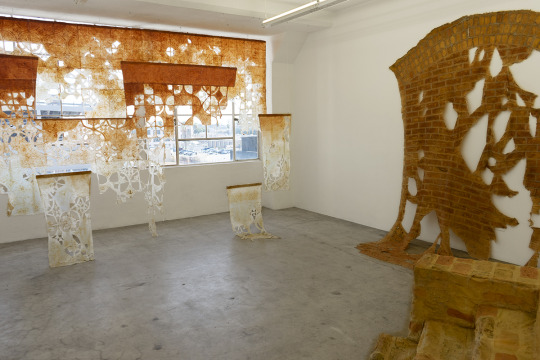



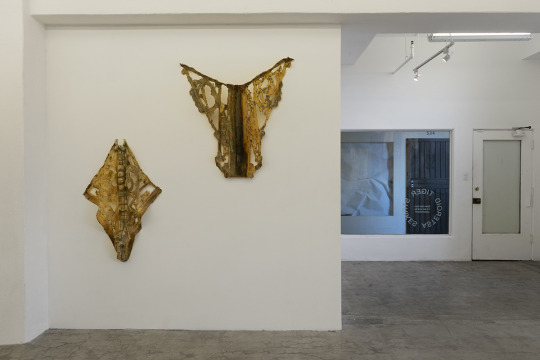
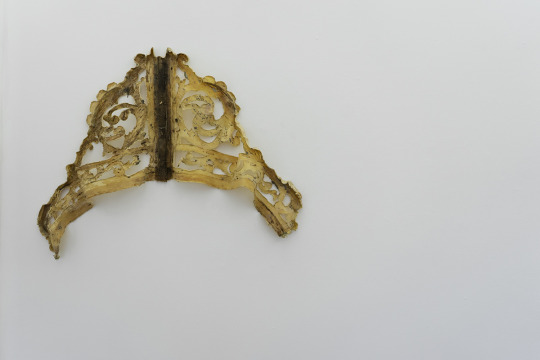
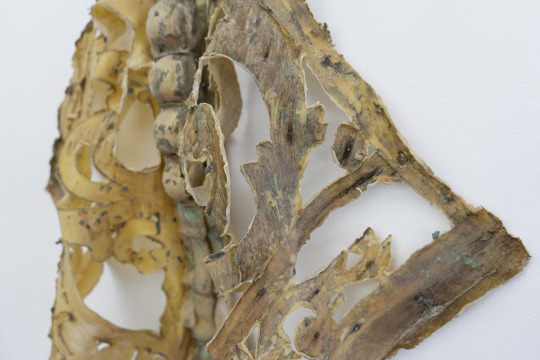

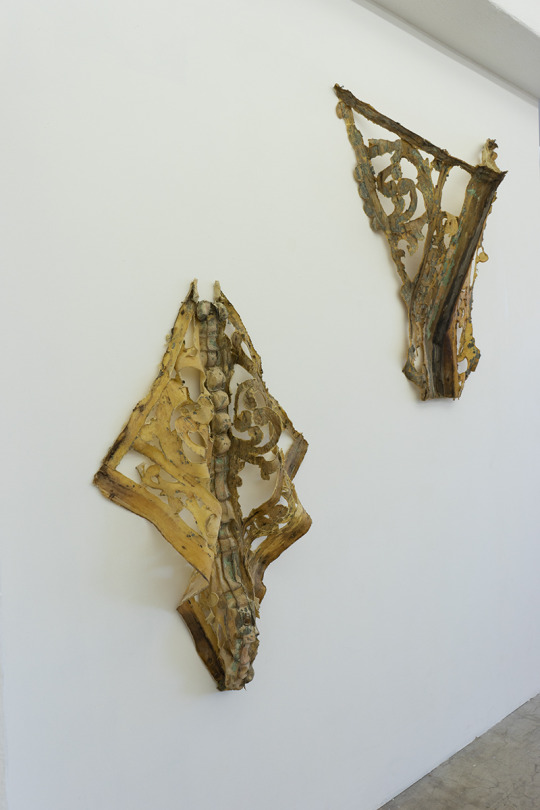

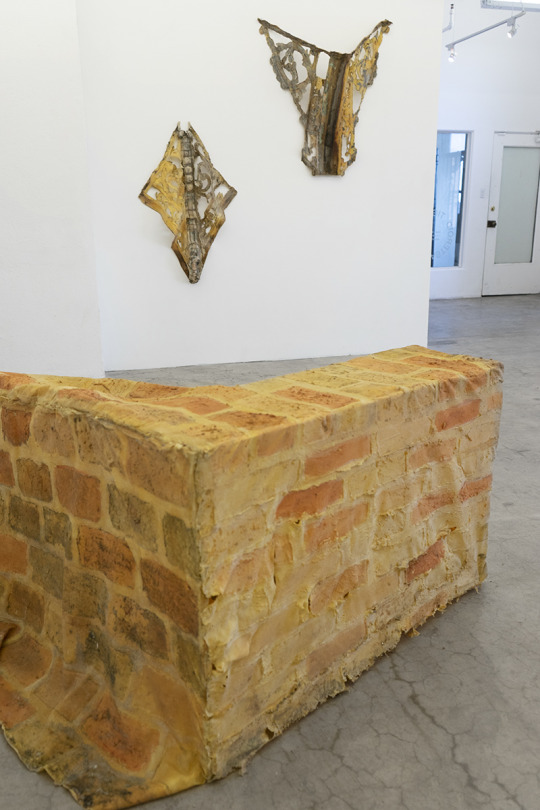

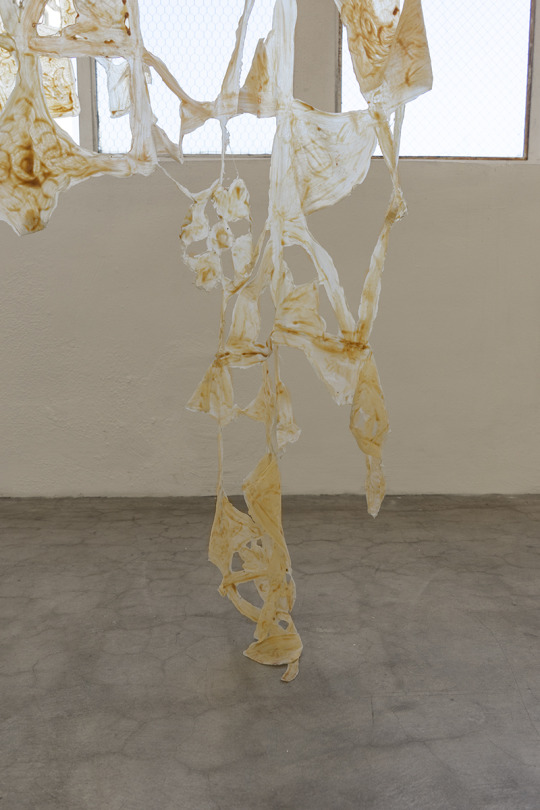





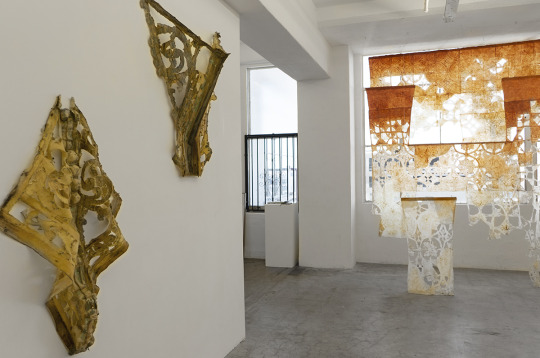
photos by Gemma Lopez
3 notes
·
View notes
Link
0 notes
Link
Check out this listing I just added to my Poshmark closet: NWOT Trio Candle Set.
0 notes
Text
My project - LUMINARYCO.de. Unique gifts. With the handprint sets, you can quickly and easily create a 3D hand sculpture at home. Surprise your other half with a unique gift!
0 notes
Text
Press release: new limited edition whiskies from The Dalmore Luminary Series, in partnership with V&A Dundee
The collaboration is the second chapter of The Dalmore Luminary Series curated in partnership with V&A Dundee, Scotland’s design museum, which brings together luminaries from the worlds of whisky and architectural design ‘The Rare’ 49 Year Old Highland Single Malt, housed in a dramatic glass sculpture by Melodie Leung of Zaha Hadid Architects, will be auctioned atSotheby’s in May 2024 with all…

View On WordPress
0 notes
Text

Luminary Sculptures by Eugene Wilson
Scanned From The Guild 9 (1994)
4 notes
·
View notes
